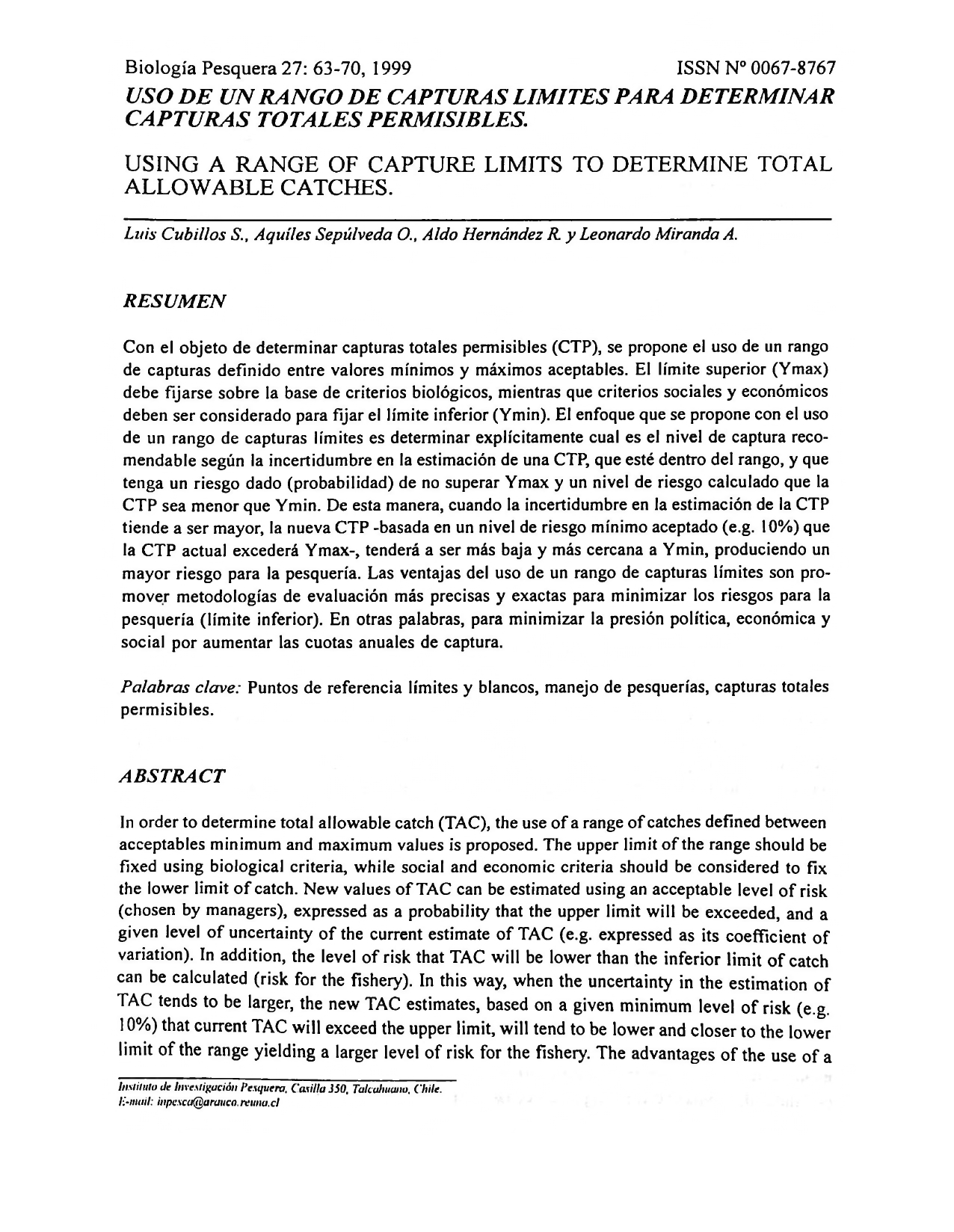Uso de un rango de captura limites para determinar capturas totales permisibles.
DOI:
https://doi.org/10.21703/0067-8767.1998.27.2605Palabras clave:
Puntos de referencia límites y blancos, manejo de pesquerías, capturas totales permisibles.Resumen
Con el objeto de determinar capturas totales permisibles (CTP), se propone el uso de un rango de capturas definido entre valores mínimos y máximos aceptables. El límite superior (Ymax) debe fijarse sobre la base de criterios biológicos, mientras que criterios sociales y económicos deben ser considerado para fijar el límite inferior (Ymin). El enfoque que se propone con el uso
de un rango de capturas límites es determinar explícitamente cual es el nivel de captura recomendable según la incertidumbre en la estimación de una CTP, que esté dentro del rango, y que tenga un riesgo dado (probabilidad) de no superar Ymax y un nivel de riesgo calculado que la CTP sea menor que Ymin. De esta manera, cuando la incertidumbre en la estimación de la CTP
tiende a ser mayor, la nueva CTP -basada en un nivel de riesgo mínimo aceptado (e.g. 10%) que la CTP actual excederá Ymax-, tenderá a ser más baja y más cercana a Ymin, produciendo un mayor riesgo para la pesquería. Las ventajas del uso de un rango de capturas límites son promover metodologías de evaluación más precisas y exactas para minimizar los riesgos para la
pesquería (límite inferior). En otras palabras, para minimizar la presión política, económica y social por aumentar las cuotas anuales de captura.




